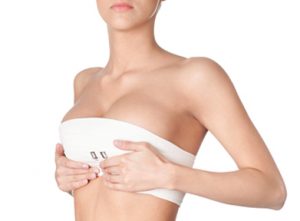 Breast implant removal can be a complex decision influenced by various personal and medical factors. One specialized surgical technique used for this purpose is the en bloc capsulectomy. This procedure involves the removal of both the breast implant and the surrounding capsule of scar tissue in one intact piece. Unlike other methods that may separate the implant from the capsule, en bloc capsulectomy aims to ensure that the entire encapsulated area is extracted together. This approach can be crucial, particularly in cases where there is a concern about potential implant leakage or contamination. By removing the implant and capsule as one unit, the risk of spreading any contents that may have leaked from the implant is minimized. This method is often recommended for patients experiencing symptoms they suspect are related to their breast implants or those with specific medical concerns such as silicone leakage or breast implant illness. Consulting with a skilled plastic surgeon is essential to determine if an en bloc capsulectomy is the appropriate procedure for your situation. Plastic surgeon Dr. Paul McCluskey provides en bloc capsulectomy to patients in Atlanta, Marietta, Georgia, and surrounding locations.
Breast implant removal can be a complex decision influenced by various personal and medical factors. One specialized surgical technique used for this purpose is the en bloc capsulectomy. This procedure involves the removal of both the breast implant and the surrounding capsule of scar tissue in one intact piece. Unlike other methods that may separate the implant from the capsule, en bloc capsulectomy aims to ensure that the entire encapsulated area is extracted together. This approach can be crucial, particularly in cases where there is a concern about potential implant leakage or contamination. By removing the implant and capsule as one unit, the risk of spreading any contents that may have leaked from the implant is minimized. This method is often recommended for patients experiencing symptoms they suspect are related to their breast implants or those with specific medical concerns such as silicone leakage or breast implant illness. Consulting with a skilled plastic surgeon is essential to determine if an en bloc capsulectomy is the appropriate procedure for your situation. Plastic surgeon Dr. Paul McCluskey provides en bloc capsulectomy to patients in Atlanta, Marietta, Georgia, and surrounding locations.
Understanding the Procedure
An en bloc capsulectomy is a detailed procedure carried out by a qualified plastic surgeon. During the operation, the surgeon makes an incision to access the breast implant and its surrounding scar tissue capsule. The main objective is to remove both the implant and the capsule as a single, intact unit. This approach is crucial for avoiding any spillage or contamination that could occur if the implant is separated from the capsule during removal.
The surgeon’s expertise is vital in this procedure, as they must carefully navigate the surrounding tissues to extract the implant and capsule without causing additional damage. This precision helps ensure that no scar tissue or implant material is left behind, which is particularly important if the implant is compromised or if there is a risk of contamination.
To perform the en bloc capsulectomy, the surgeon typically makes an incision along the original breast augmentation scar or in another discreet location to minimize visible scarring. The surgeon then meticulously separates the capsule from the surrounding breast tissue and chest wall. This process requires a high level of skill and experience, as the surgeon must avoid damaging the underlying structures while ensuring complete removal of the capsule and implant.
The procedure can be more complex and time-consuming compared to other implant removal methods, but the thoroughness of the en bloc capsulectomy offers significant advantages, especially in cases of implant rupture or breast implant illness. Patients undergoing this procedure benefit from the surgeon’s specialized training and meticulous attention to detail, which are critical for achieving optimal outcomes and minimizing potential complications.
Why Choose En Bloc Capsulectomy?
En bloc capsulectomy offers several notable advantages over other breast implant removal techniques. One key benefit is the reduced risk of contamination or leakage of implant contents into the body, particularly if the implant is compromised. This method ensures that the implant and the surrounding scar tissue capsule are removed together as a single unit, which helps prevent any potential spread of leaked materials.
This procedure is also advantageous for individuals experiencing symptoms they suspect are linked to their breast implants, such as chronic fatigue, joint pain, or unexplained rashes. For patients with silicone implants, en bloc capsulectomy is particularly beneficial because it ensures that any silicone that may have leaked into the capsule is completely removed, reducing the risk of lingering health issues.
Additionally, for those concerned about implant-associated anaplastic large cell lymphoma (BIA-ALCL), en bloc capsulectomy may serve as a precautionary measure. By removing the entire capsule along with the implant, the procedure addresses potential risks more thoroughly than other techniques that may leave parts of the capsule behind.
The thoroughness of en bloc capsulectomy, despite being more complex and time-consuming, offers significant peace of mind. Patients benefit from the surgeon’s specialized training and attention to detail, which are critical for minimizing potential complications and achieving the best outcomes. Choosing this procedure ensures a more comprehensive approach to breast implant removal, addressing both the implant and any associated health concerns.
When Is En Bloc Capsulectomy Recommended?
En bloc capsulectomy is often advised in certain situations where implant integrity or related health concerns are a primary issue. For example, if a silicone implant has ruptured, this method ensures the removal of both the implant and any leaked silicone within the capsule. This approach is particularly beneficial for those experiencing symptoms they believe are tied to their breast implants, such as persistent fatigue, joint pain, or unexplained skin conditions. Additionally, for individuals concerned about breast implant-associated anaplastic large cell lymphoma (BIA-ALCL), en bloc capsulectomy can be a proactive step. By removing the implant along with the entire scar tissue capsule, this method aims to mitigate risks more comprehensively than other techniques that might leave remnants behind. This surgical option is tailored for those who prioritize a thorough and cautious approach to their breast implant removal.
What to Expect During Recovery
Recovery from an en bloc capsulectomy varies for each individual, but there are some general expectations you can prepare for. Initially, you may experience discomfort and swelling, which are typical in the first few days after surgery. It’s common to feel tired, and you might have some bruising around the surgical area.
Your plastic surgeon will provide detailed aftercare instructions to help you through the recovery process. This often includes wearing a supportive bra to reduce swelling and provide support as your body heals. You’ll likely be advised to avoid any heavy lifting or strenuous activities for several weeks to prevent complications and ensure proper healing.
Pain management is an essential part of recovery. Your surgeon may prescribe medications to help manage any pain and keep you comfortable during the healing phase. Over-the-counter pain relievers can also be beneficial, but be sure to consult your surgeon before taking any additional medication.
Maintaining a clean surgical site is crucial to prevent infections. Your surgeon will give you guidelines on how to care for the incisions, which may include changing dressings and keeping the area dry and clean. Monitoring for signs of infection, such as increased redness, swelling, or fever, is important, and you should report any concerns to your surgeon promptly.
Follow-up appointments are a vital part of the recovery process. These visits allow your surgeon to monitor your healing, address any complications, and answer any questions you may have. It’s essential to attend all scheduled appointments and communicate openly with your surgeon about your recovery progress and any issues you encounter.
Choosing the Right Plastic Surgeon
Finding the right plastic surgeon for your en bloc capsulectomy is crucial for a successful procedure. First, ensure the surgeon is board-certified and has significant experience with this specific type of surgery. This certification indicates that the surgeon has met rigorous standards of training and expertise. Additionally, ask about the number of en bloc capsulectomies the surgeon has performed and their outcomes. Experienced surgeons are more likely to handle complex cases effectively and manage any complications that may arise.
During your consultation, inquire about the surgeon’s approach to the procedure. Understanding their technique and how they plan to minimize risks can provide peace of mind. It’s also helpful to review before-and-after photos of previous patients. This will give you a sense of the surgeon’s skill and help you set realistic expectations for your results.
Communication is another critical factor. You should feel comfortable discussing your concerns and asking questions. A good surgeon will take the time to explain the procedure, potential risks, and the recovery process in detail. They should also be open to discussing any alternative treatments and why en bloc capsulectomy is the best option for your situation.
Lastly, consider seeking reviews or testimonials from previous patients. Personal experiences can offer valuable insights into the surgeon’s expertise and bedside manner. By thoroughly researching and choosing a qualified plastic surgeon, you can increase your chances of a successful and satisfying outcome.
Conclusion
En bloc capsulectomy provides a comprehensive solution for breast implant removal, especially in situations where health concerns or implant complications are present. This procedure ensures the complete extraction of both the implant and the surrounding scar tissue capsule, offering a more thorough approach compared to other methods. Patients benefit from this technique by minimizing the risk of contamination and addressing any potential health issues related to their implants. Consulting with a skilled plastic surgeon who has experience with en bloc capsulectomy is crucial for evaluating whether this method is suitable for your needs. By choosing this specialized procedure, you can achieve a more effective and secure outcome for your breast implant removal.
For more information on procedures and treatments offered by Plastic Surgeon, Dr. Paul McCluskey and the Plastic Surgery Institute of Atlanta, visit:
Serving patients in and around Marietta, Atlanta, Roswell, Sandy Springs, Alpharetta, Buckhead, Morningside/Lenox Park, Virginia-Highland, Candler Park, Midtown, Inman Park, Poncey-Highland, Ormewood Park, Georgia and other surrounding areas.


 Hair restoration has become a sought-after solution for individuals looking to regain lost hair and boost their self-esteem. Among the various techniques available,
Hair restoration has become a sought-after solution for individuals looking to regain lost hair and boost their self-esteem. Among the various techniques available,  Hair restoration can significantly impact one’s self-esteem and quality of life. Many factors, including genetics, lifestyle choices, and certain medical conditions, contribute to hair loss. The good news is that advancements in medical science have introduced effective ways to address this issue. Among these solutions, two procedures stand out:
Hair restoration can significantly impact one’s self-esteem and quality of life. Many factors, including genetics, lifestyle choices, and certain medical conditions, contribute to hair loss. The good news is that advancements in medical science have introduced effective ways to address this issue. Among these solutions, two procedures stand out:  Achieving a toned and sculpted body requires more than just dieting and exercising. If you’re struggling to build muscle definition despite regular workouts,
Achieving a toned and sculpted body requires more than just dieting and exercising. If you’re struggling to build muscle definition despite regular workouts,  Are you struggling with stubborn fat that won’t go away despite a healthy diet and regular exercise? If so,
Are you struggling with stubborn fat that won’t go away despite a healthy diet and regular exercise? If so,  Breast implants are popular for enhancing appearance and boosting confidence. However, they are not permanent solutions. At some point, you might need to consider a breast implant replacement. This process involves removing the existing implants and replacing them with new ones, either for medical reasons, physical symptoms, or changes in personal preferences.
Breast implants are popular for enhancing appearance and boosting confidence. However, they are not permanent solutions. At some point, you might need to consider a breast implant replacement. This process involves removing the existing implants and replacing them with new ones, either for medical reasons, physical symptoms, or changes in personal preferences. As we progress into 2025, plastic surgery is advancing rapidly, driven by technological breakthroughs and a growing emphasis on individualized care. The landscape is rich with innovative methods that provide more natural and refined results. The blend of surgical and minimally invasive options caters to a wide array of aesthetic preferences, making it easier for individuals to achieve their desired looks with less downtime and more precision.
As we progress into 2025, plastic surgery is advancing rapidly, driven by technological breakthroughs and a growing emphasis on individualized care. The landscape is rich with innovative methods that provide more natural and refined results. The blend of surgical and minimally invasive options caters to a wide array of aesthetic preferences, making it easier for individuals to achieve their desired looks with less downtime and more precision. Deciding to undergo
Deciding to undergo  Breast augmentation is one of the most popular cosmetic surgeries, offering individuals the opportunity to enhance their appearance and boost their confidence. However, as with any surgical procedure, there may come a time when you consider a
Breast augmentation is one of the most popular cosmetic surgeries, offering individuals the opportunity to enhance their appearance and boost their confidence. However, as with any surgical procedure, there may come a time when you consider a